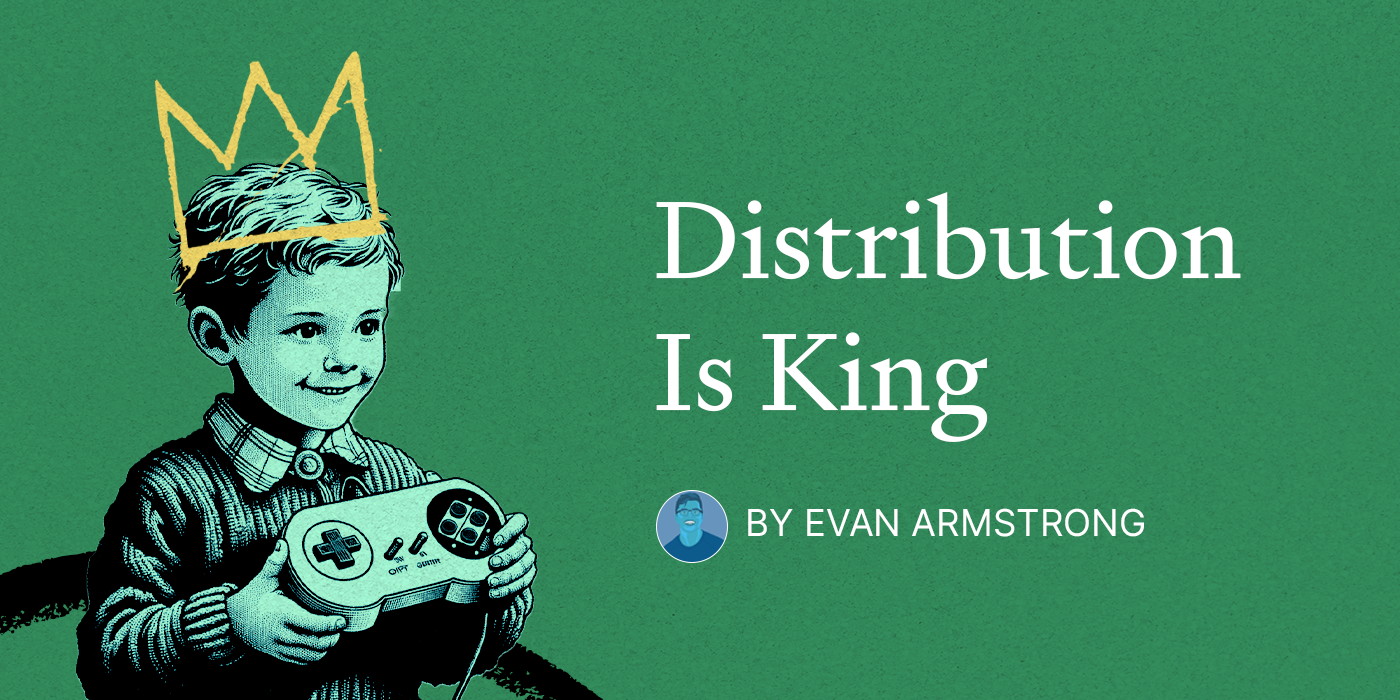Distribution Is King

🌈 Abstract
The article discusses how distribution, rather than just content innovation, is the key to building billion-dollar companies. It draws insights from the video game industry, where distribution innovations have been crucial to the success of companies like Activision and Electronic Arts. The article also examines how platform shifts, such as the transition from physical to digital distribution, can create opportunities for new players to disrupt incumbents, but also highlights the power of network effects that can make it challenging to unseat dominant platforms like Steam.
🙋 Q&A
[01] Distribution Is King
1. What is the key insight from investor Mitch Lasky that the article discusses? The key insight is that "content innovation grows audiences, and distribution innovation creates enterprise value." In other words, the way a company distributes and delivers its product to customers is more important for building a valuable business than just the product itself.
2. How does the article explain the importance of distribution over just content? The article argues that long-term enterprise value is not just about making a great product, but having a differentiated way of getting that product to customers. Distribution encompasses pricing, packaging, and other choices that impact how the product reaches the end user.
3. What examples does the article provide from the video game industry to illustrate the importance of distribution? The article discusses how video game companies like Activision and Electronic Arts were able to grow valuable businesses not just by making great games, but by innovating on the distribution side - building their own distribution systems to bypass expensive middlemen. It also examines how the transition from physical to digital distribution in video games mirrored a similar evolution in enterprise software.
[02] The Race for Network Effects
1. What challenges did Epic Games face in trying to disrupt the dominant video game platform Steam? Despite offering a lower revenue share for developers, Epic Games struggled to gain traction for its Epic Games Store against the entrenched network effects of Steam, which had a much larger library of games and user base. The article highlights how powerful two-sided network effects can be in platform businesses.
2. What strategies did Valve (the parent company of Steam) use to build its dominant position? Valve made its popular Half-Life game series exclusive to the Steam platform, forcing users to download Steam even if they bought the game physically. This allowed Steam to build an early user base and compound its network effects over 15+ years.
3. How does the article suggest that distribution innovation is key during platform shifts? The article argues that companies that can effectively navigate platform shifts, like the transition from physical to digital distribution, are the ones that can build lasting enterprise value. It suggests that the ability to take advantage of market arbitrages and build network effects quickly is crucial for distribution innovation.
</output_format>